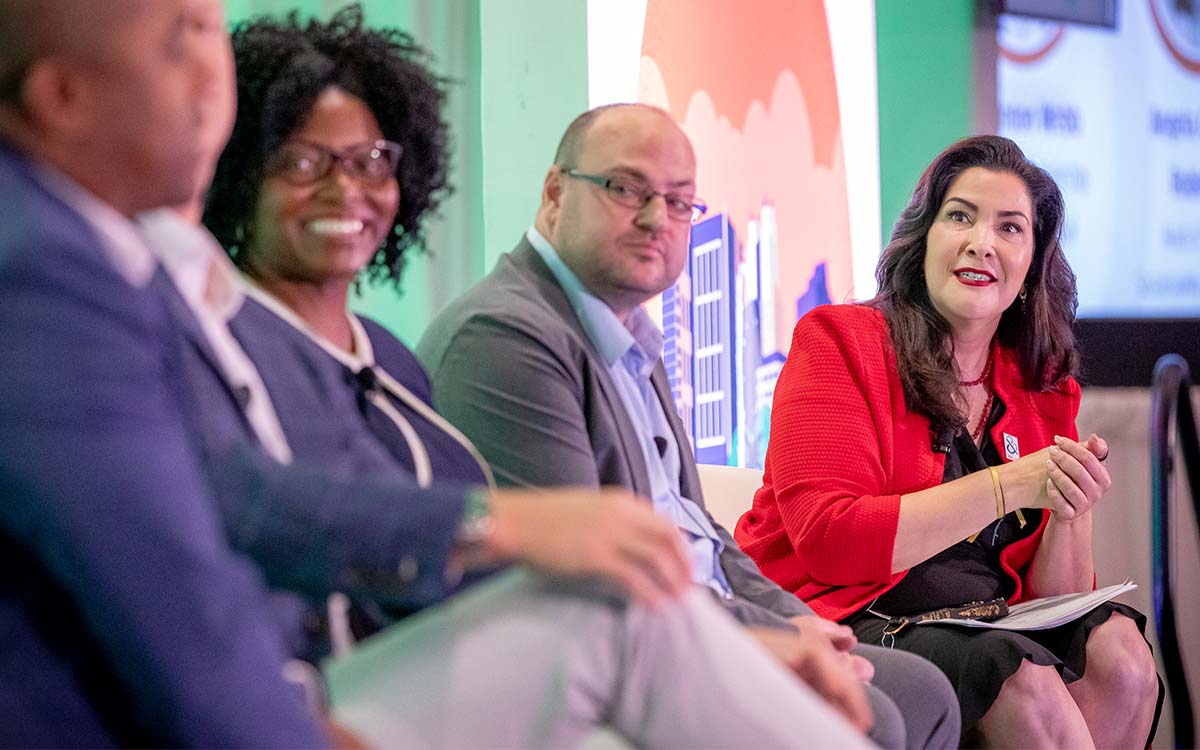The Dispatch is our blog series dedicated to unpacking trends and key insights from the premier events in the procurement space. In this post, we are recapping ProcureCon Indirect East 2024 and what our key learnings from the event are.
What is ProcureCon Indirect East?
ProcureCon Indirect East is one of two events in the WBR portfolio that focuses on all indirect categories (the other being the annual show held on the west coast). The theme of this year’s show was “Where the Future of Sourcing Takes Center Stage” and featured a lineup of procurement leaders from wide range of industries, from food manufacturing to big tech to financial services.
The PA team attended the show in Orlando as an exhibiting sponsor, leading a cabana chat session and a roundtable on strategies for harvesting savings from packaging supplies spend.

In this post, we’ll provide a recap of the show and some key takeaways we left with as we finish 2024 and head into 2025.
Theme 1: Strategic Procurement
Several sessions focus on developing and implementing successful procurement strategies, including negotiation techniques, supplier relationship management, and cost reduction initiatives.

Our key takeaways: Strategic procurement isn’t merely about cutting costs; it’s about unlocking hidden value within the supply chain. By cultivating collaborative partnerships with suppliers, leveraging data-driven insights, and employing innovative negotiation techniques, organizations can create a sustainable competitive advantage. This approach not only reduces costs but also enhances quality, improves risk management, and drives innovation
Theme 2: Digital Transformation in Procurement
20% of sessions explored how digital technologies are transforming the procurement landscape, with sessions on topics like e-procurement, automation, artificial intelligence, and data analytics. (We wrote earlier this year on our blog about Generative AI in Procurement. If you missed that post, you can read it here.)
Our key takeaways: As we look ahead to 2025 and beyond, digital transformation in procurement will continue to accelerate, driven by advancements in technology and the increasing need for efficiency, resilience, and innovation.

Theme 3: Sustainability in Procurement
The ProcureCon agenda had strong emphasis on sustainable procurement practices, with 20% of the sessions on sourcing sustainable materials, ethical sourcing, and managing environmental and social impact.
Our key takeaways: Sustainability is poised to become an even more critical aspect of business strategy in 2025 and beyond. As consumers, investors, and regulators increasingly demand ethical and environmentally responsible practices, organizations will face growing pressure to integrate sustainability into their supply chains.

Theme 4: Supplier Diversity and DEI Initiatives
15% of the agenda highlighted the importance of diversity and inclusion in the procurement process, with sessions on building diverse supplier bases and creating a more inclusive procurement environment.
Key takeaway: In 2025, procurement supplier diversity will be more inclusive and strategic. Organizations will focus on recognizing and supporting diverse suppliers from marginalized groups, such as women, minorities, and people with disabilities. Additionally, data-driven approaches will be used to identify opportunities for supplier diversity and measure progress. To foster a more equitable and sustainable supply chain, companies will demand greater transparency from their suppliers regarding their diversity and inclusion practices. Furthermore, governments and regulatory bodies will likely introduce new policies and regulations to drive supplier diversity initiatives.
Theme 5: Risk Management
Several sessions address strategies for mitigating procurement risks: supplier risk management, contract risk management, and cybersecurity risks.
Key takeaway: In 2025, procurement supplier diversity will be more inclusive and strategic. Organizations will focus on recognizing and supporting diverse suppliers from marginalized groups, such as women, minorities, and people with disabilities. Additionally, data-driven approaches will be used to identify opportunities for supplier diversity and measure progress. To foster a more equitable and sustainable supply chain, companies will demand greater transparency from their suppliers regarding their diversity and inclusion practices. Furthermore, governments and regulatory bodies will likely introduce new policies and regulations to drive supplier diversity initiatives.
If you attended, what did we miss in our recap?
- CATEGORIES
- Industry Trends

